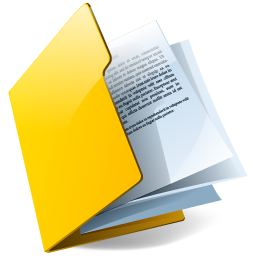Mathematics
CBSE class 3 Mathematics study material in PDF format. MyCBSEguide provides solved papers, board question papers, revision notes and NCERT solutions for CBSE class 3 Mathematics. The topics included are number system,addition, subtraction, multiplication, division, fraction, time, measurement, geometry, pattern and symmetry, money and data handling.

CBSE, JEE, NEET, CUET
Question Bank, Mock Tests, Exam Papers
NCERT Solutions, Sample Papers, Notes, Videos

myCBSEguide App
Complete Guide for CBSE Students
NCERT Solutions, NCERT Exemplars, Revison Notes, Free Videos, CBSE Papers, MCQ Tests & more.
Download CBSE class 3 Mathematics study material in PDF format. MyCBSEguide provides solved papers, board question papers, revision notes and NCERT solutions for CBSE class 3 Mathematics. The topics included are number system,addition, subtraction, multiplication, division, fraction, time, measurement, geometry, pattern and symmetry, money and data handling.
Geometry
SHAPES & SPATIAL UNDERSTANDING
- Creates shapes through paper folding, paper cutting.
- Identifies 2-D shapes
- Describes the various 2-D shapes by counting their sides, corners and diagonals.
- Makes shapes on the dot-grid using straight lines and curves.
- Creates shapes using tangram pieces.
- Matches the properties of two 2-D shapes by observing their sides and corners (vertices).
- Tiles a given region using a tile of a given shape.
- Distinguishes between shapes that tile and that do not tile.
- Intuitive idea of a map. Reads simple maps (not necessarily scaled)
- Draws some 3D-objects.
Numbers
NUMBER SEQUENCE UPTO 1000
- Reads and writes 3-digit numbers.
- Expands a number w.r.t. place values.
- Counts in different ways – starting from any number.
- Compares numbers.
- Forms greatest and smallest numbers using given digits.
ADDITION AND SUBTRACTION
Adds and subtracts numbers by writing them vertically in the following two cases:
– without regrouping.
– with regrouping.
- Uses the place value in standard algorithm of addition and subtraction.
- Solves addition and subtraction problems in different situations presented through pictures and stories.
- Frames problems for addition and subtraction facts.
- Estimates the sum of, and difference between, two given numbers.
MULTIPLICATION
- Explains the meaning of multiplication (as repeated addition).
- Identifies the sign of multiplication.
- Constructs the multiplication tables of 2, 3, 4, 5 and 10
- Uses multiplication facts in situations.
- Multiplies two digit numbers using standard algorithm and Lattice multiplication algorithm.
DIVISION
- Explains the meaning of division from context of equal grouping and sharing.
- Relates division with multiplication.
- Completes division facts:
– by grouping
– by using multiplication tables.
MENTAL ARITHMETIC
- Adds and subtracts single digit numbers and two digit numbers mentally.
- Doubles two digit numbers mentally (result not exceeding two digits).
Money
- Converts Rupee to Paise using play money.
- Adds and subtracts amounts using column addition, and subtraction without regrouping.
- Makes rate charts and bills.
Measurement
LENGTH
- Appreciates the need for a standard unit.
- Measures length using appropriate standard units of length by choosing between centimeters and meters.
- Estimates the length of given objects in standard units and verifies by measuring.
- Uses a ruler
- Relates centimeter and meter.
WEIGHT
- Weighs objects using non standard Units.
- Appreciates the conservation of weight.
VOLUME
- Measures and compares the capacity of different containers in terms of non-standard units.
- Appreciates the conservation of volume.
TIME
- Reads a calendar to find a particular day and date.
- Reads the time correct to the hour.
- Sequences the events chronologically.
Data Handling
- Records data using tally marks.
- Collects data and represents in terms of pictograph choosing appropriate scale and unit for display through pictographs.
- Draws conclusions from the data by discussing with the teacher.
Patterns
- Identifies simple symmetrical shapes and patterns.
- Makes patterns and designs from straight lines and other geometrical shapes.
- Identifies patterns in the numerals for odd and even numbers and in adding odd and even numbers.
- Partitions a number in different ways.
- Identifies patterns in his surroundings
- Identifies patterns in multiplication with, and dividing by 10s.

myCBSEguide
Trusted by 1 Crore+ Students

Test Generator
Create papers online. It's FREE.

CUET Mock Tests
75,000+ questions to practice only on myCBSEguide app
 myCBSEguide
myCBSEguide



